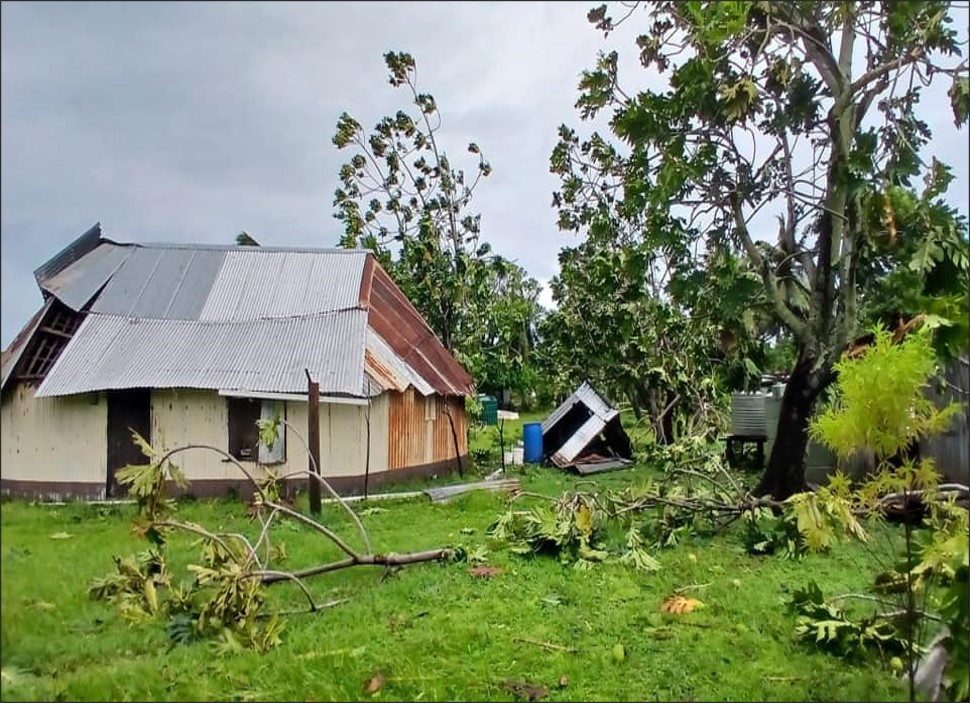
28 April 2025, Apia, Samoa – At the sixteenth session of the Pacific Islands Climate Outlook Forum (PICOF-16), Dr. Nicolas Fauchereau, Principal Scientist for Climate and Analytics at National Institute of Water and Atmospheric Research (NIWA), provided review on the current tropical cyclone (TC) season 2024-2025 for the south Pacific region.
He noted that the current TC season started abnormally late with the first Tropical Depression forming in late December 2024.
Overall, eleven disturbances and four named storms (TCs Pita, Rae, Seru and Tam) make up the current TC season*, with TC Rae in late February causing significant damage from flooding and uprooted trees in Fiji. TC Tam named on 14 April caused severe weather conditions in northern New Zealand and reported casualties in New South Wales, Australia from hazardous coastal conditions.
“Predictions for below-normal TC activity were given in the TC outlooks issued in early October 2024, and the TC season coming to a close end of April has been near consistent with this pattern,” Dr Fauchereau said.
“Lower than normal TC activity in the central Pacific tends to be associated with La Niña conditions, and with only a few weeks to go, the 2024–2025 TC season is likely to be classified as remarkably inactive.”
While the 2024-2025 season saw reduced TC activity than the previous season, this pattern highlights the importance of continued monitoring by the forum, as even in quieter seasons, TC’s still pose significant risks to the region.
The PICOF-16 is a key event aimed at improving seasonal climate predictions to help safeguard the region’s future. Held virtually and in-person, PICOF-16 brought together representatives from National Meteorological and Hydrological Services (NMHSs) of Pacific Island Countries and Territories (PICTs), international meteorological organisations, and climate researchers. With their mission to review climate and oceanic conditions across the Pacific from November 2024 to April 2025 and collaboratively develop accurate, timely, and user-relevant climate and ocean outlooks for the upcoming season.
The forum is part of a broader effort by the Pacific Regional Climate Centre (RCC) Network and the Pacific Islands Climate Services (PICS) Panel to ensure that regional forecasts are not only scientifically sound but also practically useful to national services and local communities.
Organised by the Secretariat of the Pacific Regional Environment Programme (SPREP), PICOF-16 was supported by a wide network of technical partners including the World Meteorological Organisation (WMO), Australian Bureau of Meteorology (BOM), National Institute of Water and Atmospheric Research (NIWA), APEC Climate Centre (APCC), and the University of Hawaii.

“Climate-related risks in the Pacific are increasing and even we have quiet season, it is important to prepare our communities using the cyclone information from this platform.” said SPREP Senior Climatologist, Mr Philip Malsale.
“For the past two seasons, we have observed the number of cyclones not reaching the predicted numbers and this is also in-line with the overall long term declining trend of cyclone. However, we’ve seen that even a single event can cause lot of flooding in cities across the region. A clear example is cyclone Rae which caused lot of damage in Lau, which also recorded the ninth wettest February on record for the 79 years of record for Ono -I station in Fiji.”
A key outcome of PICOF-16 will be a comprehensive regional climate, ocean, and cyclone outlook statement for May to October 2025. NMHSs across the Pacific will use this statement to develop their national statement to inform their own national seasonal outlook and advisory products, tools critical to supporting sectors like agriculture, water management, health, and disaster risk reduction.
With funding support from the Intra-ACP Climate Services and Related Application Programme (ClimSA) program through European Union, PICOF-16 underscores the growing international commitment to climate resilience in one of the world’s most vulnerable regions.